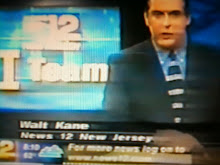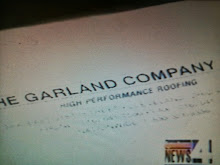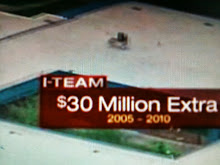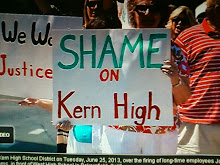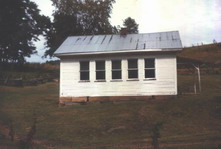For those who think this scam is just going on in the United States, think again.
We have exported the so-called "civilized" form of corruption.
How was I tipped off to it going on in Canada?
To begin with, I was aware that Tremco was a Canadian company many years ago. Then I heard of a California Tremco Rep that had taken the scam into Latin America.
Sure enough, you can google the companies involved and find their specs in various countries online.
Let's start with Canada, since they ae so close and so much alike the US (sorry about that to our good Canadian neighbors! We do share a very long border!)
Canada does something unique - they require specifications be posted online. A good service to the taxpayer, in fact - and could help keep the scammers run out if used properly by those "in the know" and the press.
I hear there are a lot of good, real roofing consultants in Canada using these blogs to fight the scams there - good for them! These blogs were designed to give the facts, and as much evidence as possible, to fight the scams anywhere. They are most welcome to send us information to post or to follow up on.
Here's a recent spec to Garland in Canada, in an article in their press - over the controversy now heating up.
Briefly, in the Muskoka-Parry Sound area, a new building constructed in 2002-3 for about $3.8 million had to have a 6,600 square foot area of the roof repaired last year at $30,340.
The new roof "consultant", Garland Canada, has recommended total roof replacement at year 8 and their system, which they have assured the town lasts at least 30 years and is expected to last 45 years.
Reports are that the roof is 28,000 square feet, or 280 squares. And the total initial - not including those outrageously cost is $454,000, $16.21 per square foot or $1,621.42 per roofing square.
Just how many hundreds of feet in the air is this roof (not!)???
Wow, so this community is willing to put down "gold" roofs???? I sure hope they are getting gold for that price!
You can see the story here:
http://www.cottagecountrynow.ca/community/southmuskoka/article/1042197
Another good community has gotten taken once on a roof, and have now fallen for the masters of the conflict of interest con game - again.
Canada could show up the American system by doing the following:
1. Publish a national standard which could be available to everybody for what ever roofing system someone wanted.
This could be easily done and it would eliminate the waste in one swoop
For example, the national standard could state that all high performance modified roofs must meet ASTM D6162 type 111 with and a base ply being ASTM D6163 type 111.
And you don't have, for instance, additional "tensile strengths" properties added to form a "Lock-Spec" - which are not part of the comprehensive, existing ASTM D6162 testing standard for SBS modified roofs.
The same goes for warranty standards. For instance, the NRCA or RCI could publish a standard manufacturers' warranty.
Clarity prevents corruption - Keep it simple!
2. The NRCA should publish performance standards based upon astm standards as well as consulting standards. The problem could become that they would be restrictive and proprietary.
3. RCI should refuse to allow RRO (Registered Roof Observers) designation of roof consultants if they work for a manufacturer
4. Architects should also be required to possess an RRO or RCI (Roof Consultants' Institute) standing if they are going to spec a roof
We have exported the so-called "civilized" form of corruption.
How was I tipped off to it going on in Canada?
To begin with, I was aware that Tremco was a Canadian company many years ago. Then I heard of a California Tremco Rep that had taken the scam into Latin America.
Sure enough, you can google the companies involved and find their specs in various countries online.
Let's start with Canada, since they ae so close and so much alike the US (sorry about that to our good Canadian neighbors! We do share a very long border!)
Canada does something unique - they require specifications be posted online. A good service to the taxpayer, in fact - and could help keep the scammers run out if used properly by those "in the know" and the press.
I hear there are a lot of good, real roofing consultants in Canada using these blogs to fight the scams there - good for them! These blogs were designed to give the facts, and as much evidence as possible, to fight the scams anywhere. They are most welcome to send us information to post or to follow up on.
Here's a recent spec to Garland in Canada, in an article in their press - over the controversy now heating up.
Briefly, in the Muskoka-Parry Sound area, a new building constructed in 2002-3 for about $3.8 million had to have a 6,600 square foot area of the roof repaired last year at $30,340.
The new roof "consultant", Garland Canada, has recommended total roof replacement at year 8 and their system, which they have assured the town lasts at least 30 years and is expected to last 45 years.
Reports are that the roof is 28,000 square feet, or 280 squares. And the total initial - not including those outrageously cost is $454,000, $16.21 per square foot or $1,621.42 per roofing square.
Just how many hundreds of feet in the air is this roof (not!)???
Wow, so this community is willing to put down "gold" roofs???? I sure hope they are getting gold for that price!
You can see the story here:
http://www.cottagecountrynow.ca/community/southmuskoka/article/1042197
Another good community has gotten taken once on a roof, and have now fallen for the masters of the conflict of interest con game - again.
Canada could show up the American system by doing the following:
1. Publish a national standard which could be available to everybody for what ever roofing system someone wanted.
This could be easily done and it would eliminate the waste in one swoop
For example, the national standard could state that all high performance modified roofs must meet ASTM D6162 type 111 with and a base ply being ASTM D6163 type 111.
And you don't have, for instance, additional "tensile strengths" properties added to form a "Lock-Spec" - which are not part of the comprehensive, existing ASTM D6162 testing standard for SBS modified roofs.
The same goes for warranty standards. For instance, the NRCA or RCI could publish a standard manufacturers' warranty.
Clarity prevents corruption - Keep it simple!
2. The NRCA should publish performance standards based upon astm standards as well as consulting standards. The problem could become that they would be restrictive and proprietary.
3. RCI should refuse to allow RRO (Registered Roof Observers) designation of roof consultants if they work for a manufacturer
4. Architects should also be required to possess an RRO or RCI (Roof Consultants' Institute) standing if they are going to spec a roof



